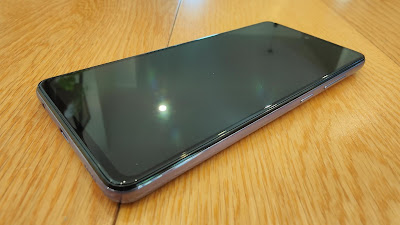To upgrade or wait another year?
This is the classic dilemma every iPhone owner is faced with, usually around Spring when the new models are typically launched.
It's always a balancing act; how satisfied are you with your current handset versus the prospective gains to be had by whatever the new lineup is offering?
The "Peak Phone" debate often rears up, raising the question of whether smartphones can actually get any better. I've always found this to be a stupid debate; nobody ever asks if we've reached "Peak Car" or "Peak Television" and I think we're all agreed the day we reach "Peak Computer" we're pretty much done for as a species.
Given phones are essentially pocketable computers anyway, it's safe to say they still have a way to go.
So how much further has the iPhone gone in 2021?
As has quickly become the norm, a couple of weeks ago, Apple released four versions of the iPhone 13 - the mini, the Pro, the Pro Max and obviously, the device I'm reviewing here, the stock standard iPhone 13.
Except there's nothing particularly standard about this handset these days.
I've been using the iPhone 12 Pro for the last few months and to be honest, I'm struggling to find something last year's Pro can do that this year's "vanilla" version can't. In fact, if we start with processing power and battery life, the iPhone 13 actually comes out on top.
That's because it runs on the A15 Bionic chip - not only faster than pretty much any other phone chip currently available but also very power-efficient - especially when it comes to connecting to 5G, which tends to be quite the battery drainer.
In fact, after years and years of listening to iPhone owners whinge about their batteries always being flat, I've been super impressed by the iPhone 13 - often still two-thirds charged by the time I get to bed.
The iPhone 13 offers quite the range of colour choices; Starlight, Blue, Pink, (Product) Red - which is obviously the best colour for a phone ever - and yes, Midnight Black. Which is what I've been sent. Not that I'm bitter.
That was a joke of course - I'm far from bitter as this is a truly decent phone indeed - especially when it comes to its camera, something else I've found a little lacking in iPhones of the past. The rear-facing camera is a dual lens affair, a wide and ultra-wide, both larger sensors and this year arranged diagonally, just to mix things up a bit.
I can't lie; I miss having a telephoto lens on my phone camera but there are other things this phone can do besides just take cute pics of my puppy. For instance, the new Cinematic Mode does an incredibly intuitive job on focusing on the primary subject in your videos - and you can switch focus with a simple tap of the screen. Combined with Sensor-Shift Optical Image Stabilisation means it's actually rather easy to capture some very professional-looking footage with hardly any effort. The larger sensors provide improved low light performance, although you can't use Night Mode with portrait shots like you can on the Pro models.
Because of some of the other incredible photo and video features Apple has introduced to the iPhone 13 Pro and Pro Max, I was a little apprehensive when I first started using the cameras on this phone but I've honestly found the picture quality to be consistently great - point, shoot, boom.
The 12MP TrueDepth selfie cam is pretty standout too - it also boasts Cinematic Mode for those groovy, split-focus videos, as well as a similar range of filters, lighting effects and bokeh control. But perhaps most importantly - Face ID; the fastest and most reliable method I've used to unlock a phone. Although, it still frustrates me you can't unlock straight to your home screen; what's the point of that extra swipe up, exactly?
Oddly for any Apple device, when I first set up the iPhone 13, I encountered a minor glitch. Given masks have become a kind of compulsory fashion accessory these days, it was a major bonus when Apple gave users the ability to bypass Face ID to unlock their phones with their watches. With that setting enabled, as long as you're wearing your Apple Watch and it's unlocked, you can still get into your phone while masked up, without having to enter your pin.
Trouble is, on the iPhone 13, although that setting was still there, it didn't work. Every time I tried to toggle it on, I’d get a message claiming the phone couldn't connect with my watch - even though all my other apps and notifications were syncing perfectly. This drove me crazy for a while until some intensive Googling reassured me everyone else was having the same issue and it was likely an iOS update was on the way to sort it out.
I have to point out it's very unusual for any Apple gadget not to perform at 100% straight out of the box, no matter how new it is - the fact iPhones "just work" is a big reason people choose them. I guess the real test here is how quickly Apple can fix a little hassle like this.




























